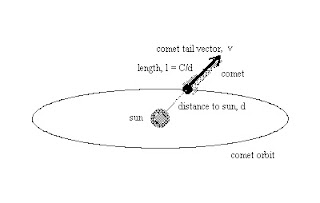I can go on and on about how happy I am that the epic adventure of Bilbo finally got brought to life on screen, but then that is hardly worth reading about, is it? Simply saying I enjoyed every bit the movie is all to be expected from a Tolkien fan. No, this will not do. What is interesting is the things that are... well... "unexpected."
(Warning: mild spoilers ahead.)
First of all, beside the familiar main characters, the addition of Radagast the brown is a magical one. I thought he might be a rather boring character when I first saw him in the Trailer. Radagast was just a kind little old man that concerned himself only with his animals. It seemed he would not contribute much to the plot. And here I must say, Mr. Sylvester McCoy is a very good actor. He portrayed the wizard's loving nature to such a profound level that event the audience would forget about the hobbit, the ring, or indeed anything else and think that the wellness of Radagast's forest is the most important matter in the would. When he ran around his house in a frenzy to save his hedgehog, I find myself praying that he would succeed. The scene made the coming of the Necromancer seem more fearful and abominable because the audience has developed feelings for the would that is at stake of destruction from the villain.
Anther good portray of character is that of Smaug the dragon. Peter Jackson did it subtly. The downfall of the magnificent dwarf city Erebor is all we know of Smaug. When reading the book, we learned about Erenor mainly from all the eccentric description given by the dwarves. We understand that the halls were grand, the treasures piled high, and all is in awe who looked upon the great city..... from a dwarf's view. It is difficult to feel the eagerness to go on perilous journeys for it. The amazing thing about movies is that they give us the chance to really "see" things for ourselves, and let us be the judge. And when I saw Erebor, with its high pillars and bright marbles glimmering in torchlight and the all the precious gold and gems it contained.... It was spectacular beyond words! The magnificence filled me with longing. In that magical moment, I feel like I would have done anything just to go there. Now I almost sounded like a dwarf myself! To have all that wealth taken so suddenly by a great big bully of a dragon, it would have filled anyone with anger. What was more, that bully really had no need of any of it. He just buried himself in the treasures and sleep his time away! No doubt without giving the audience the feeling of the greatness of Erebor, Smaug would not seem as detestable.
Lastly, it's about the humor. Although The Hobbit is a cheerful story meant for entertainment, I did not expect Peter Jackson to stretch it to such extent because the movies are, after all, the prologue of the dark Lord of the Rings trilogy. One would have though he'd go for a similar style. He must have lost some of the audience because of all the fantasy and fun. At some point, The Hobbit is almost like a cheerful animated children's film from Dreamworks. But that made the movie much more lighthearted and enjoyable. There is less suffering and the audience are spared from heartache.
When a great book become a major motion picture, we get to sit back and fondly remember the events like our own memory. Not only that, but we are invited to look at things in a different point of view. We find emotions that were not present before and think thoughts that are new to us. The audiences are swept off their feet an into their own, unexpected journey.
* * *
"True courage is about not knowing when to take a life, but when to spare one." -- Gandalf, The Hobbit








